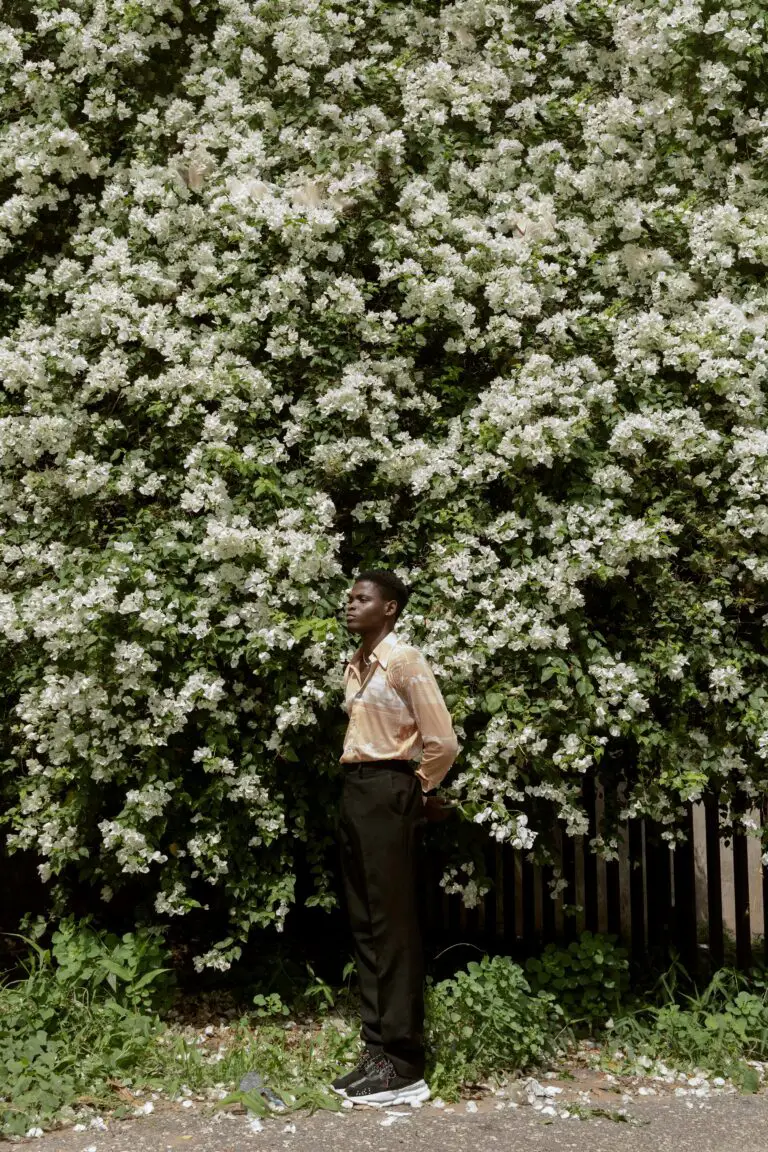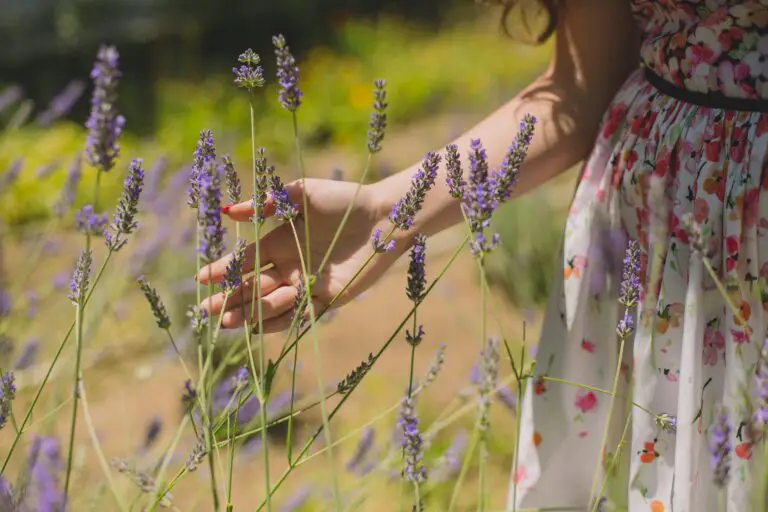Introduction to Sedum: A Sun Worshipper’s Delight
Embrace the resilience and charm of sedum plants, the hardy succulents that bask in the brilliance of the sun. With a fascinating ability to thrive in the heat, sedums are not just surviving; they’re flourishing with a sizzling zest for life. Let’s dive into the world of these evergreen charmers and discover why they’re perfectly suited for the full sun environment.
Characteristic of their sturdy nature, sedums are born sun-seekers, with fleshy leaves that store water, allowing them to withstand the harshest rays the sky has to offer. It’s as if these plants have their own built-in water reservoirs, making them the ultimate low-maintenance garden inhabitants. Picture this: a vibrant sedum mat unfurling like a natural carpet beneath the limitless dome of a blue summer sky.
Imagine the kaleidoscope of colors that sedum varieties present. From the lime green whispers of Sedum japonicum to the deep burgundy whispers of Sedum ‘Purple Emperor’, their colors intensify with more sun exposure. It’s a visual symphony as they transform patches of your garden into a painter’s palette kissed by Apollo’s chariot. To witness the spectrum these succulents offer, explore our guide on spreading sedum for ground cover glory.
Don’t let their delicate appearance fool you; these sun-loving plants are tough as nails. Sedums stand their ground when hit with relentless sunbeams, proving that they’re not just survivors but conquerors of the full sun battlefield. This resilience invites a symphony of pollinators; bees and butterflies drawn to their nectar-rich blooms, animating your garden with life’s dance.
So, will sedum grow in full sun? The answer is a resounding yes! In their preferred sunny spots, sedums exude joy and vitality, flourishing with minimal care yet delivering maximum impact. They’re like the solar panels of the plant world, soaking in the sun’s energy and thriving in a display of unbridled green glory. Engage in the sedum spectacle and witness these sun worshippers elevate your garden landscape to a celebration of light and life.
Understanding Full Sun Conditions: A Primer for Gardeners
Greet the sun as your ally, garden enthusiasts! The term ‘full sun’ in the green-thumbed world is an open invitation for at least six hours of unfiltered sunshine greeting the earth each day. But it’s not just about the duration; the quality of light matters too. Imagine the midday sun at its peak; that’s the golden standard for plants basking in ‘full sun’ conditions. We’re looking for direct, unobstructed light here, no dilly-dallying in the dappled shade.
Why does this matter? Because, just like us, plants need that sun-kissed glow for more than suntans. They’re at a backyard barbecue, and sunlight is the grill – it’s where the magic of photosynthesis happens. Without ample light, plants can’t convert sunlight into the glucose they need to grow. This means the difference between a sedum that’s surviving and one that’s throwing a fiesta of growth.
Think of sedum, those plucky succulents that are the talk of the plant world. They’re like the sun worshippers of the botanical realm; they soak up the rays like they’re on a beach in Cancún. Now, not all plants are as brazen in their sun-chasing habits, but for sun-lovers like sedum, full sun is their ritzy, A-list event where they flaunt their lavish foliage and vibrant blooms.
But here’s the twist: not all full sun is created equal. The intensity varies by region—compare the robust rays of Arizona to the gentle glow of Maine—and even the time of year can be a game-changer. Gardeners must play the role of sun-matchmaker, ensuring plants like sedum are paired with the sun situation that makes their chlorophyll-filled hearts sing.
Lean in, folks, because here’s the real scoop: Even in full sun, it’s all about balance. Too much of a good thing? You might as well be baking cookies on a dashboard in July. Plants stressed by excessive sun can falter, their leaves a telltale sign, turning as crispy as autumn leaves. There’s a harmony to be struck where sedum basks in full sun yet avoids the scorching disdain of too much UV affection.
Now, let’s dive into a real-life example. Check out this engaging video of gardeners planting with annuals for full sun. It’s like a visual feast, a how-to guide that transforms “full sun” from textbook theory to living color:
And there you have it, the sun-drenched dance floor of full sun gardening. Whether you’re a sedum superstar or aiming for a diverse array of sun-loving plants, knowledge is power. Adapting to the sunlight at your disposal is not just smart gardening; it’s a way to celebrate the radiance that nature bestows. So, don your garden gloves, and let’s get planting in that glorious, life-giving light!
The Science of Sunshine: How Sedum Uses Light
Feel the warmth of a sun-soaked afternoon and imagine the sun’s rays gently caressing a landscape of sedum—a scene embodying growth and vitality. But what’s happening beneath those succulent leaves basking in the full sun?

Sedum, the ever-resilient plant warrior of the succulent world, harnesses the full power of sunlight through a remarkable photosynthetic process. In this celestial dance, sunbeams are absorbed and transformed into the sugars needed for boisterous blooms and robust health. It’s a real-life alchemy—turning solar flares into floral flair!
Envision a succulent leaf as tiny green solar panel — intricate, efficient, and ever industrious. The full sun offers a generous outpouring of usable light, fueling sedum’s growth cycle like a green-energy powerhouse. Bright light intensifies pigmentation, leading to a radiance in leaves that becomes an ornamental spectacle, and stimulating a bountiful floral performance each growing season.
Let’s take a stroll through a sedum’s sunny day: rays break the dawn, casting vitality across the garden. Here, the sedum stands tall, welcoming the sunshine. Photosynthesis kickstarts, and within these juicy leaves, magic unfolds. Oxygen is released, a gift of freshness to its surroundings, and where the energy flows, flowers follow. When the sedum is graced with full sun exposure, its flowers bloom with such vigor, creating a spectacle worthy of any sun-worshipper’s garden.
As rays of light pattern the landscape, some sedum varieties reveal their true colors. Red-edged leaves intensify, and flowering tops blaze into life—a fiery celebration of sunlight’s embrace. Perplexed why some sedum won’t bloom? Consider their sunlight reception; it truly makes or breaks their flamboyant show.
Understanding this solar relationship bolsters our gardening wisdom. Plants of all kinds, but especially sun-loving sedum, are earnest reflectors of the light they receive. By recognizing the importance of full sun in a sedum’s life, not only do we witness a botanical performance but, we sync our gardening practices with the rhythm of the natural world.
Choosing the Right Varieties: Top Sedum Types for Sun-Drenched Gardens
The sedum family boasts a plentiful array of species and cultivars, each with its unique charm and resilience to bask in the full glory of the sun. Embracing their time under the sizzling sky, certain varieties of sedum have evolved to truly flourish in sun-drenched conditions. Let’s dive into the world of these sun-loving succulents and discover the real-life standouts that can bring zest and vitality to your blooms under a clear blue canvas.

First on our list is Sedum ‘Autumn Joy’, a classic favorite that beams with enthusiasm as its blossoms transition from warm pinks to rich rust tones in the autumn. Picture this hearty plant thriving alongside a stone pathway, where each day’s end greets it with a radiant sunset glow.
Now, if you’re envisioning a carpet of gold, let Sedum acre fulfill that dream. This ground-hugging champion laughs in the face of drought, spreading its golden stars across your garden expanse. Imagine this golden sedum like a sun-kissed beach, each floret a grain of sand contributing to a dazzling yellow sea.
For a touch of drama, look no further than Sedum ‘Matrona’, with its statuesque stems and dusty pink blooms that command attention. This sedum doesn’t just grow; it performs, standing tall and proud, like an artiste in the spotlight of the midday sun.
A scene-stealer in forms and hues, the Sedum spurium ‘Dragon’s Blood’ weaves a tapestry of red and green. As the summer sun intensifies, so does the fiery red in its leaves, creating a display reminiscent of a phoenix rising from the ashes.
Finally, the Sedum reflexum, also known as the ‘Blue Spruce,’ offers a tranquil coolness with its bluish foliage, an oasis of serenity amidst the scorching rays. Envision this beauty mingling with lavender or rosemary, the silvery blues forging a refreshing breeze in your heat-loving garden.
Cultivating these sun-worshiping sedum varieties provides not only a resilient garden but a living tapestry of color and texture. For more insights on getting the best out of your sedum and ensuring they remain vibrant, check out our tips on seasonal care and maintenance. With proper care, your sun-embracing sedum collection will be the envy of the neighborhood, showcasing that with the right picks, even the brightest sun can be a plant’s best friend.
Planting and Caring for Sedum in Full Sun
Are you curious if the sun-loving sedums can really handle the spotlight all day long? Well, get ready to bask in the good news, because these resilient succulents don’t just tolerate full sun; they relish it! Let’s delve into the ins and outs of planting and fostering sedum in those sunny spots of your garden where other plants might throw in the trowel.

It all starts with the soil. Sedums are like the minimalist enthusiasts of the plant world – they thrive in well-draining soil that’s not too fussy. To create the ideal bed, mix in some sand or gravel with your garden soil to boost drainage. This prevents water from pooling and keeps the roots happy and rot-free. A pro tip from gardeners in the know: a raised bed or sloping ground can really be your secret weapon against soggy soil situations.
When it’s time to plant, give your sedum some room to spread. These plants love to sprawl out under the sun, like sunbathers on a beach. Dig a hole just as deep as the root ball and twice as wide, then gently place your sedum in its sunny new home. The best time to do this? Aim for the cooler parts of the day—early morning or late afternoon—to avoid any midday heat stress.
Watering your sedum is a delicate dance with the sun. Imagine giving your plants just enough water to sip on, without drenching them. As a rule of thumb, it’s better to underwater than overwater. These succulents are drought-tolerant, storing water in their fleshy leaves for dry days. During the peak of summer, though, don’t forget to give them a drink when the top inch of soil dries out.
Maintenance for these sun-bathing beauties is refreshingly low-key. Keep an eye out for the occasional deadhead or trim to encourage fuller growth. And while pests and diseases are rare guests in the sedum world, it’s wise to stay vigilant. A quick peek now and then to ensure no unwelcome critters are enjoying your sedum more than you are should do the trick.
Incorporating sedum into a full sun garden spot is like adding a drop of sunshine that keeps giving back. Their tenacity and vibrant foliage make them standout performers that truly come alive under the sun’s embrace. Just remember, with a little soil savvy, strategic planting, and measured watering, your sedum will not just grow, but positively thrive in full sun!
Sedum Sunburn: Myths and Realities
Sun-loving succulents like sedum inevitably spark dialogue about their tolerance to blazing sunlight. While it’s widely known that they are sun seekers, concerns about sedum sunburn can cast a shadow of doubt. But let’s bask in some truth here, shall we? We’re digging into the nitty-gritty of sedum and sunlight, debunking misconceptions, and offering tips to shield these robust plants from potential harm.
Sedums are hardy by nature, reveling in full sun with a zeal matched by few other plants. In implementing wiser watering techniques and selecting the right location, sedums can flourish without the fear of getting crispier than a well-done slice of bacon. Yet, the reality is that no plant is completely invulnerable to the sun’s intense rays – not even the tough-as-nails sedum.
The myth that sedums are impervious to sunburn is, indeed, just that – a myth. Prolonged exposure to scorching sunlight, especially during a sizzling summer, can leave the fleshy leaves of these succulents with unsightly burn marks. It’s like leaving your hand in a beam of concentrated sunlight with a magnifying glass – something’s bound to sizzle!
But worry not, succulent savants, for prevention is simpler than you might think. It’s a delicate balance of ample light without overdoing it. When a heatwave hits, go the extra mile – move potted sedums to shaded sanctuaries or employ a screen to filter the ferocity of the midday sun. Remember, early morning or late afternoon rays are gentler and can cater to your sedum’s sun-worshipping without leaving a mark.
Let’s take a cue from real-life examples – seasoned gardeners often plant sedums alongside taller flora that provide intermittent shade, or they use sheer curtains to protect indoor succulents. Nature itself offers a lesson too: the waxier the leaves of a sedum, the better it’s dressed for a sun-soaked fiesta. Touché, evolution.
For a visual guide on safeguarding your green treasures, take a peek at this informative snippet:
Remember, sedum plants will indeed grow in full sun, but they don’t have to battle the elements unarmed. With a little human ingenuity and a dash of preventive care, your sunburn concerns will soon find themselves eclipsed by the vibrant, unblemished splendor of your thriving succulents.
Benefits of Sedum in Your Sunlit Landscape
Let’s turn up the heat on garden discussions and bask in the glow of sedum, the sun-worshipper’s botanical buddy. Indeed, sedum plants are not just survivors but flag-bearers of brilliance in the full fury of the sun. Imagine a garden space drenched in sunlight, and there you’ll picture sedums standing tall, their succulent leaves and vibrant flowers unfazed by the relentless rays.
Why sedum, you ask? These resilient plants offer ecological benefits such as attracting pollinators with their nectar-rich blooms. Notice how bees and butterflies are akin to guests at a banquet when they flutter around these flowers. Sedum’s drought-tolerant nature also supports biodiversity in your garden without draining resources. It’s like a mini oasis that asks so little yet gives so much.

Apart from being nature’s allies, sedums are a feast for the eyes. Envision hues of green, yellow, red, and purple as sedum transforms your landscape into a tapestry of color. The aesthetic appeal is undeniable, making sedums a stylish choice for modern garden designs. Whether you’re sculpting a rockery or sketching out a green roof, sedum fits the frame perfectly, enhancing your outdoors with a brushstroke of hardiness and elegance.
Moreover, who hasn’t marvelled at a sedum-lined pathway glowing in the sun’s embrace? Or the way these plants spill over stone walls with casual grace? They are the epitome of carefree beauty, thriving where others wilt, and imparting an air of wild, untamed charm to any space they inhabit.
It’s clear that including sedum in full-sun gardens is more than a choice; it’s a sound investment in your property’s beauty and the environment. So, let’s soak up the sun and let sedum shine in our gardens, shall we?
Frequently Asked Questions
Welcome to the sunny side of gardening! You’ve got questions about sedum, and we’ve got the answers that will make your succulent garden radiate with success. Let’s dive into some of the most burning questions – no sunscreen required!
Can Sedum Survive in Hot Climates?
Like a cactus in the desert, sedum plants are built for the heat. They’re the camels of the succulent world, storing water in their leaves to tide them over through scorching days. Imagine a sedum plant as a self-sufficient survivor, battling out the intense sun with a sip stored within. Known for their resilience, sedums relish the embrace of a hot climate, where they’re free to sprawl under the vast, open sky. Just think about that the next time you find yourself wilting on a hot day!
How Much Sun is Too Much for Sedum Plants?
There’s a fine line between a sunbath and a sunburn, even for our succulent friends. Although sedum loves the spotlight, too much exposure can cause their vibrant colors to fade or their leaves to scorch — kind of like us without our trusty SPF. Generally, these plants thrive with about six hours of sunlight daily. Think of it as the golden hour for your golden sedum – enough to energize but not enough to enervate. Always aim for a sunny spot, but watch out during those peak noon heat waves. A little shade during the most intense part of the day keeps your sedum from crying out for an aloe vera rescue!
And for a little visual inspiration, check out this video on keeping your sedum and other full sun dwellers beaming with health and beauty:


